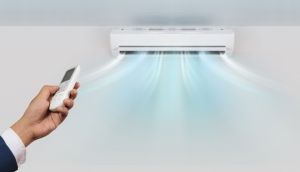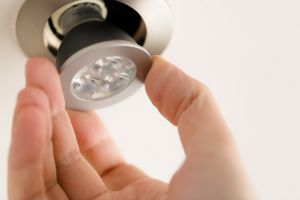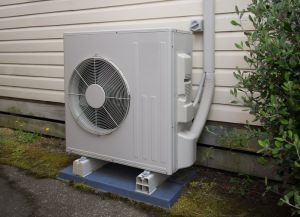Energy efficiency should, of course, be a priority for households seeking to drive down their electricity costs, and using energy efficient products, along with paying particular attention to patterns of usage, will assist in reducing expenditure over the course of a billing period.
A recently released report, commissioned by the Energy Efficiency and Conservation Authority (EECA), sheds light on the benefits of reducing peak electricity demand, both for consumers and the wider economy, helping to ease pressure on lines networks and generation.
The EECA advises that the Concept Consulting report, What is the case for electricity efficiency initiatives?, estimates that greater uptake of energy efficiency measures, reducing the peak shape of household demand, could lead to a $30 million per year reduction in the overall cost of supplying electricity to New Zealand households.
The report highlights more energy efficient lighting, such as LED lighting, along with greater uptake of heat pumps for space heating, as being “measures that would make the biggest difference to reducing peak residential electricity demand”, the EECA states.
With this in mind, what do consumers need to know about peak demand, and what are some of the steps that can be taken to promote household energy efficiency during peak hours?
What is peak demand?

Peak demand is a period of time during which demand for energy is at its highest across a network, such as over the course of a day or week, or during different seasonal periods. For instance, there are certain times in the day when electricity demand is typically greater, such as during the evening on weekdays, when many householders are arriving home, turning on lights and utilising a range of appliances, from the kitchen to the living room.
The Electricity Authority notes in its 2016 Electricity in New Zealand report that “demand for electricity varies from moment to moment”, which requires almost instant changes in supply, advising that:
“There are daily and seasonal patterns; electricity consumption is usually highest on cold winter evenings when people want to heat their houses, but some regions may also have high demand over summer when farmers need to increase the use of farm irrigation and people want to turn their air conditioning up.”
The EECA advises that its report defines peak demand as being between the hours of 5 and 8pm on weekdays in June, July and August.
Reflecting the cost of peak demand, the EECA states that the report “estimates about half of electricity lines companies’ costs lie in maintaining the network capacity to deliver electricity at peak times, and that significant areas of potential efficiency gains have yet to be made”.
Energy efficient options: LED lighting and heat pumps
Energy efficiency should be a priority consideration for consumers thinking about purchasing new lighting or appliances, with the long-term savings provided by such products having the potential to far outweigh any initial cost savings delivered by less energy efficient alternatives.
The EECA points to its report’s observation that many consumers do not make good efficiency decisions due to “choice overload” or “present bias”, resisting upfront costs despite the potential for long-term benefits.
The following product categories, referred to in the report, illustrate the benefits of looking to the long term, showing how consumers could save by opting for more energy efficient options.
LEDs

The EECA’s Energywise website describes LEDs as being “the most efficient and longest-lasting lighting option and good for most general household use”.
“They’re especially good for fittings that are hard to get at as you don’t have to change the bulb often,” Energywise states. “Whilst they cost a bit more upfront, over their life the energy savings make up for that many times over.”
Energywise advises that LEDs:
- Are priced from $8 per bulb.
- Consume up to 85 per cent less energy than standard incandescent bulbs for the same light output.
- Should last at least 15,000 hours, equating to around 15 times longer than a standard incandescent bulb (based on manufacturer claims).
- When turned on provide instant full brightness, and are available in many different types.
Heat pumps

Of course, the type of heating suitable for your home will depend upon individual circumstances, and consumers should consider all options.
Energywise states that “heat pumps are the most efficient way of using electricity to heat your home”, advising that consumers should refer to the Energy Rating Label, including a star rating system, to determine the energy efficiency of individual products.
Making sure your residence is insulated, choosing a quality heat pump brand, a correctly sized model that is right for the climate and environment that it will operate in, and which is well-installed, Energywise advises that households should:
- Only heat when needed – not leaving the heat pump on all day if you are not there, using a timer for efficient operation.
- Only heat where needed – keeping heat in by shutting doors and curtains.
- Maintain a healthy temperature – aiming for around 18 to 20 degrees.
- Avoid “auto” mode – which will see the heat pump trying to maintain the set temperature, shifting between heating and cooling, potentially wasting a lot of energy.
- Regularly clean the filter – inside the indoor unit, as per manufacturer instructions.
Time to consider time-of-use? Tariffs that encourage less peak usage

Certain retailer tariffs are structured to actively encourage less electricity consumption during peak periods, and should be considered by consumers capable of adopting a flexible approach to usage.
These types of tariffs, under which consumers are charged different rates dependent upon when they use electricity (as opposed to a flat, constant rate charged over the course of a day), utilise smart meter technology, which allows for the recording of real-time usage data.
Time-of-use tariffs
Time-of-use tariffs are typically divided into peak (higher electricity rates) and off-peak (lower rates) usage periods, effectively encouraging users to concentrate their electricity usage in off-peak hours.
Of course, if your household’s electricity usage is concentrated as a rule during off-peak hours, these sorts of tariffs should be a priority consideration – however, it should also be kept in mind that if usage patterns change, costs may in turn rise.
For consumers capable of altering their usage patterns, these sorts of tariffs may also be suitable – for instance, you may choose to use certain appliances, such as a washing machine or dishwasher, only during off-peak hours.
Consumers should confirm with individual retailers as to what rates apply at different times of the day.
Spot price tariffs
Spot price tariffs, under which consumers pay a rate based on the real-time cost of electricity, are another tariff that can help deliver energy savings for those capable of moderating their usage.
The Electricity Authority advises that spot prices are “the price retailers pay when they buy electricity from the wholesale market”.
“Spot prices change every half-hour and can vary quite dramatically depending on supply and demand,” the Electricity Authority states. “Typically spot prices are higher during winter, and weekdays at breakfast and dinner time.”
Given that prices under spot price tariffs are constantly changing, these sorts of tariffs may be suitable for consumers who are both flexible and willing to proactively manage their electricity account and usage.


Share this article